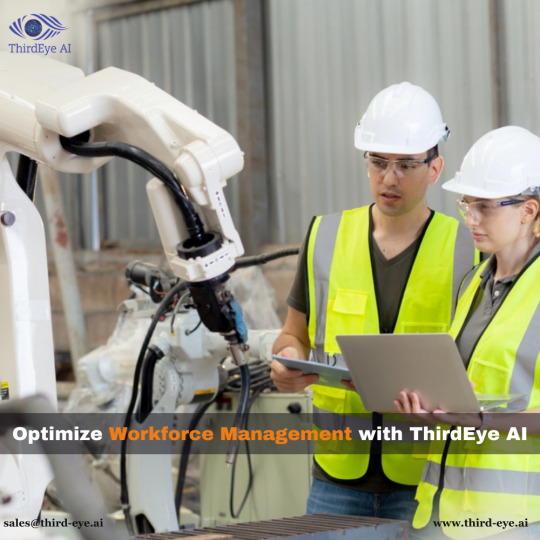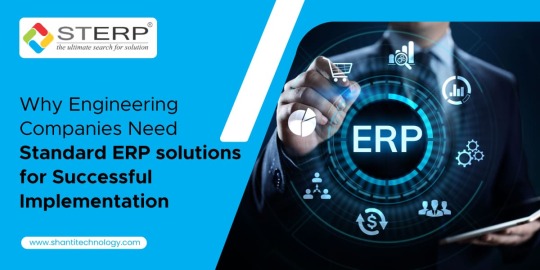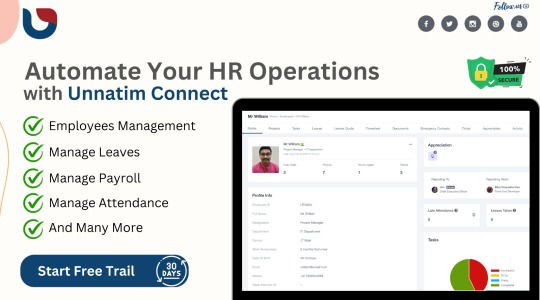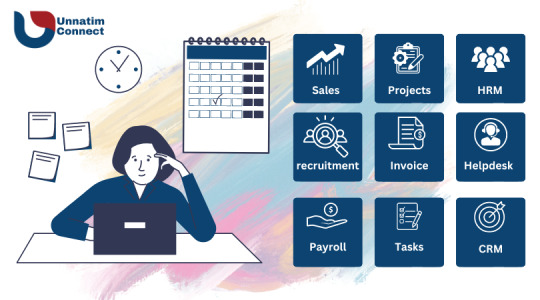#Workforce Planning & Analytics Software
Explore tagged Tumblr posts
Text
The Role of Workforce Analytics in Talent Acquisition and Management

The ability to effectively manage and develop talent is crucial for organizational success. It is where workforce planning comes into play. workforce planning analytics is a powerful tool that helps organizations understand and optimize their workforce by leveraging data and advanced analytical techniques. Here we go to explore workforce analytics, its role in talent acquisition and management, and how workforce planning and analytics can drive business success. We'll also discuss the importance of workforce management software in this process.
What is Workforce planning?
Workforce planning involves the use of statistical and analytical methods to understand workforce data and gain insights into employee performance, behavior, and trends. It encompasses a range of activities, from basic reporting and metrics to advanced predictive analytics. The primary goal of workforce planning is to provide actionable insights that help organizations make informed decisions about their workforce.
Components of workforce planning
Data Collection: Collect data from different seeds such as HR strategies, employee surveys, and performance reviews.
Data Analysis: Using statistical tools and techniques to analyze the collected data.
Reporting and Visualization: Presenting the analyzed data in a clear and understandable format through dashboards and reports.
Predictive Analytics: Using historical data to predict future trends and behaviors.
The Function of Workforce Planning Analytics in Talent Acquisition
Talent acquisition is the process of finding and hiring the right talent for an organization. Workforce planning analytics plays a crucial role in this process by providing insights that help organizations identify, attract, and retain top talent.

Identifying Talent Gaps
Workforce planning analytics helps organizations identify gaps in their current workforce. By analyzing data on employee skills, performance, and turnover rates, organizations can determine which areas need improvement and where there are growth opportunities.
Enhancing Recruitment Strategies
With workforce planning analytics, organizations can optimize their recruitment strategies. For example, by analyzing data on successful hires, organizations can identify the most effective recruitment channels, the best time to hire, and the characteristics of top-performing employees.
Improving Candidate Selection
Workforce research can also improve the candidate selection process. By analyzing data on past hires, organizations can develop predictive models that identify the characteristics of successful employees. It helps in screening candidates more effectively and making better hiring decisions.
The Role of Workforce Planning Analytics in Talent Management
Talent management involves developing and retaining employees to ensure they reach their full potential. Workforce planning is essential in this process as it provides insights into employee performance, engagement, and development needs.
Employee Engagement
Engaged employees are more effective and less likely to exit the institution. Workforce analysis can help measure employee engagement through surveys and other data sources. By analyzing this data, organizations can identify areas where engagement is low and develop strategies to improve it.
Learning and Development
Workforce analysis can identify the skills and competencies that employees need to develop. This information is crucial for designing training and development programs that help employees grow and succeed in their roles.

Workforce Planning and Analytics
Workforce planning and analytics involve the systematic identification and analysis of workforce data to ensure that an organization has the right people with the right skills in the right roles at the right time. This process is essential for long-term business success.
Strategic Workforce Planning
Strategic workforce planning involves forecasting future workforce needs based on business goals and objectives. Workforce planning analytics helps organizations predict future talent requirements and develop strategies to meet these needs. It includes identifying critical roles, assessing the availability of talent, and developing succession plans.
Operational Workforce Planning
Operational workforce planning focuses on the short-term needs of the organization. It involves analyzing current workforce data to identify immediate talent gaps and developing strategies to address these gaps. Workforce planning and analytics provide the data and insights needed to make informed decisions about hiring, training, and deployment.
The Importance of Workforce Management Software

Workforce management software is a critical tool for implementing workforce analysis. It provides the necessary infrastructure for collecting, analyzing, and reporting workforce data.
Data Integration: Integrates data from various sources, providing a comprehensive view of the workforce.
Analytics and Reporting: Offers advanced analytics and reporting capabilities to provide actionable insights.
Performance Tracking: Tracks employee performance and provides tools for performance management.
Engagement Surveys: Facilitates the collection and analysis of employee engagement data.
Predictive Analytics: Uses predictive models to forecast future trends and behaviors.
You Can Also Watch:
youtube
Wrapping Words
Workforce analytics is a powerful tool that plays a critical role in talent acquisition and management. By leveraging workforce planning and analytics, organizations can identify talent gaps, enhance recruitment strategies, and improve candidate selection. Workforce analysis also supports talent management by providing insights into performance, engagement, and development needs. With the help of workforce management software, organizations can effectively implement workforce analytics and drive business success.
#workforce analytics#workforce planning and analytics#workforce planning analytics#what is workforce analytics#workforce management software#Youtube
0 notes
Text
Workforce Planning & Analytics Software Solution with Third Eye AI

Experience unparalleled efficiency with Third Eye AI. Overcome workforce management challenges effortlessly. From tracking employee presence to monitoring machine availability, streamline operations with cutting-edge AI technology. With real-time insights and predictive analytics, optimize resource allocation and enhance productivity.
#workforce planning Software Solution#Workforce Planning & Analytics Software#WorkForce Planning#workforce planning Solution
0 notes
Text
AI power
The Power of AI Tools: A Glimpse Into the Future
In today’s fast-paced world, artificial intelligence (AI) is no longer a futuristic concept—it’s a present-day reality that is revolutionizing industries, transforming businesses, and enhancing personal productivity. AI tools, powered by advanced algorithms and machine learning, are at the heart of this transformation, making tasks easier, smarter, and more efficient. Whether you are an entrepreneur, a professional, or simply someone looking to stay ahead of the curve, understanding and leveraging AI tools can unlock a world of possibilities.
What Are AI Tools?
AI tools are software applications that use artificial intelligence algorithms to perform tasks that typically require human intelligence. These tasks include data analysis, automation, content creation, customer support, predictive analytics, language processing, and more. The best part? These tools can often complete these tasks faster, more accurately, and without the need for human intervention.
AI tools range from simple applications like chatbots and virtual assistants to complex systems like autonomous vehicles and personalized marketing platforms. As these tools become more sophisticated, they are being integrated into virtually every aspect of our lives—from healthcare to finance, from e-commerce to education.
Types of AI Tools and Their Applications

Why Should You Embrace AI Tools?
Increased Efficiency AI tools are designed to handle large amounts of data and repetitive tasks quickly and accurately. This allows businesses to automate routine operations, saving time for employees to focus on more complex, creative, and strategic tasks.
Cost Savings While AI tools may come with an initial investment, they save businesses substantial amounts of money in the long term. Automation reduces labor costs, machine learning helps to predict market trends accurately, and AI-driven decision-making optimizes resource allocation.
Improved Decision Making AI tools analyze vast amounts of data and provide actionable insights in real-time. With AI-powered analytics, companies can make data-driven decisions faster, leading to more effective business strategies and better overall performance.
Enhanced Personalization AI tools are great at personalizing experiences, whether it’s an online shopping experience or a personalized health plan. By analyzing user behavior and preferences, AI helps businesses create targeted experiences that engage customers and drive loyalty.
Innovation By using AI tools, companies can unlock new business opportunities and discover innovative solutions to existing problems. AI tools can help in research and development, leading to breakthroughs in products, services, and even new business models.
Challenges and Considerations
While AI tools offer immense potential, they also come with challenges. The implementation of AI can be costly and complex, requiring significant expertise and resources. Additionally, concerns about data privacy, ethics, and job displacement need to be addressed. As AI continues to evolve, it will be important to strike a balance between harnessing its power and addressing the societal implications.
The Future of AI Tools
The future of AI is incredibly promising. As technology continues to advance, we can expect AI tools to become even more integrated into our everyday lives. From hyperpersonalized experiences to autonomous systems, AI will continue to enhance human capabilities and create new possibilities across industries.
For businesses, staying ahead of the AI curve will be essential for success. Those who embrace AI tools now will gain a competitive edge, improve efficiency, and innovate at an unprecedented pace. For individuals, mastering AI tools will open new career paths and opportunities for growth, making AI literacy an essential skill for the modern workforce.
In conclusion, AI tools are not just a passing trend; they are the foundation of the future. By embracing and integrating these tools into our workflows, we can unlock new levels of productivity, creativity, and innovation. Whether you're a business leader or an individual, understanding the power of AI tools is key to thriving in an increasingly digital world. The possibilities are limitless—it's time to get on board and explore the vast potential that AI has to offer. writer by Vijay kumar somu
2 notes
·
View notes
Text
Why Engineering Companies Need Standard ERP Solutions for Successful Implementation
In today’s fast-paced manufacturing industry, the need to streamline operations, improve efficiency, and ensure growth is paramount. Businesses, especially in the engineering and manufacturing sectors, are turning to ERP software to manage their operations effectively. Enterprise Resource Planning (ERP) software is a game-changer for manufacturers looking to grow faster by integrating their processes and providing a comprehensive solution for resource management, decision-making, and scalability. If you are a manufacturer in India or a growing business in Bhopal, partnering with the right ERP software company in Bhopal could be the key to unlocking your potential. This blog explores the benefits of ERP software for manufacturers, the role of local ERP software providers in Bhopal, and why adopting ERP solutions is essential for success in today’s competitive landscape.

What Is ERP Software and Why Does It Matter?
ERP software is an integrated system that unifies core business processes such as procurement, inventory management, production planning, finance, and customer relationship management (CRM) into a centralized platform. This ensures seamless communication between departments, minimizes errors, and optimizes resource usage. For manufacturers, manufacturing enterprise resource planning solutions offer specific functionalities to address production scheduling, supply chain management, and quality control. These features are critical for scaling operations and improving overall business performance.
Benefits of ERP Software for Manufacturers
1. Centralized Operations
Manufacturers handle a wide range of tasks daily, from raw material procurement to final product delivery. ERP software integrates all these processes into a single platform, eliminating silos and ensuring real-time communication. Leading ERP software providers in Bhopal specialize in offering solutions tailored to manufacturing needs, ensuring smoother operations.
2. Enhanced Decision-Making
ERP systems provide accurate, real-time data through intuitive dashboards and analytics tools. This enables business leaders to make informed decisions, whether it is about production schedules, resource allocation, or financial forecasting. Engineering firms, in particular, can benefit from ERP software for engineering companies in India, which offers insights specific to their project-oriented workflows.
3. Optimized Resource Utilization
Effective resource management is critical in manufacturing. ERP software helps monitor and allocate raw materials, workforce, and equipment efficiently, reducing waste and ensuring optimal use of resources. By partnering with an engineering ERP software company in Bhopal, businesses can access customized solutions that cater to their unique requirements.
4. Improved Productivity
Automation of routine tasks, such as inventory tracking and order processing, frees up employees to focus on more strategic activities. This boost in productivity is a significant reason why manufacturers using ERP software for engineering companies experience faster growth.
5. Scalability
As manufacturing businesses grow, their operational needs become more complex. ERP systems are designed to scale with the organization, supporting additional locations, products, and services. Local ERP software companies in Bhopal provide scalable solutions that align with the growth trajectories of businesses in the region.
Why Bhopal Manufacturers Should Choose Local ERP Providers
Bhopal’s manufacturing and engineering sectors are thriving, thanks to its strategic location and growing industrial base. Local businesses stand to gain significantly by adopting ERP systems offered by experienced ERP software providers in Bhopal.
1. Tailored Solutions
Local providers understand the specific challenges faced by manufacturers in Bhopal and can customize solutions to meet their needs. For example, ERP software companies in Bhopal may offer modules tailored to local supply chains or compliance requirements.
2. On-the-Ground Support
Partnering with a local ERP software company in Bhopal ensures faster response times and personalized support during implementation and maintenance. This reduces downtime and ensures a smoother transition.
3. Cost-Effectiveness
Local ERP providers offer cost-effective solutions by eliminating the need for long-distance travel or remote troubleshooting. Businesses in Bhopal can enjoy world-class services without breaking the bank.
ERP Software for Engineering Companies in India
Engineering companies often deal with project-based operations requiring precise planning, tracking, and execution. ERP software for engineering companies in India is designed to address these needs, offering features like project management, resource scheduling, and cost tracking.
In Bhopal, collaborating with an engineering ERP software company in Bhopal ensures that local engineering firms have access to specialized solutions. These tools not only enhance operational efficiency but also improve project delivery timelines, leading to greater customer satisfaction.
ERP for Manufacturing Companies in India
India’s manufacturing sector is booming, driven by government initiatives and growing demand. To stay competitive, businesses must invest in advanced tools like ERP for manufacturing companies in India. These systems help manufacturers streamline production, manage supply chains, and maintain quality standards.
For manufacturers in Bhopal, adopting ERP software in Bhopal is a strategic move to keep pace with industry leaders. Features like real-time inventory management, production scheduling, and demand forecasting ensure businesses can respond quickly to market changes.
Real-Life Benefits of ERP Implementation
Manufacturers who implement ERP systems report:
Reduced Costs: By optimizing processes, ERP systems lower operational costs.
Faster Delivery: Improved production planning leads to quicker order fulfillment.
Better Quality: Automated quality checks ensure products meet customer expectations.
Businesses in Bhopal that have partnered with ERP software companies in Bhopal have experienced significant improvements in productivity, customer satisfaction, and revenue growth.
How to Choose the Right ERP Software Company in Bhopal
Selecting the right ERP provider is critical for a successful implementation. Here is what manufacturers should look for in an ERP software company in Bhopal:
Industry Expertise: Choose providers specializing in ERP software for engineering companies or manufacturing sectors.
Customization: Ensure the solution aligns with your unique business processes.
Local Presence: A local provider offers faster support and a better understanding of regional requirements.
Scalability: Opt for a system that can grow with your business.
Conclusion
ERP software is no longer a luxury but a necessity for manufacturers aiming to grow faster and compete effectively. By integrating operations, improving resource management, and enhancing decision-making, ERP systems empower businesses to achieve their goals. For manufacturers in Bhopal, collaborating with a trusted ERP software company in Bhopal ensures tailored solutions, cost-effectiveness, and reliable support.
Whether you are part of the engineering sector or a manufacturing enterprise, investing in manufacturing enterprise resource planning solutions will position your business for success in today’s dynamic market. Do not wait—explore the benefits of ERP software in Bhopal today and take the first step toward sustainable growth.
#ERP for manufacturing company in India#ERP implementation company in India#Best ERP implementation agecny#STERP#ERP software for engineering companies#Manufacturing enterprise resource planning#Rajkot#Surat#Ahmedabad#Gujarat#Maharashtra#Mumbai#Pune#Bhopal#Indore#Madhya Pradesh#ERP software for engineering companies in India#ERP integration#cloud ERP#ERP India#small business#ERP implementation
3 notes
·
View notes
Text
The Role of Innovation in Business Growth with HRMS System

Innovation is a critical driver of business growth, enabling companies to stay competitive, enhance operational efficiency, and meet the evolving needs of their workforce. One area where innovation has had a profound impact is in the implementation of Human Resource Management Systems (HRMS). An HRMS System is a comprehensive suite of software applications designed to manage human resources and related processes throughout the employee lifecycle. This essay explores in detail how innovation through HRMS contributes to business growth, covering aspects such as streamlining HR processes, improving data management and decision-making, enhancing employee experience, facilitating remote work and flexibility, supporting strategic HR initiatives, ensuring compliance and risk management, and providing scalability.
1. Streamlining HR Processes
Automation
One of the most significant innovations brought about by HRMS is the automation of repetitive and time-consuming tasks. Payroll processing, attendance tracking, benefits administration, and other routine activities can be automated, freeing up HR professionals to focus on more strategic tasks. Automation reduces the likelihood of errors, ensures timely and accurate payroll, and improves overall efficiency. For instance, automated time and attendance systems can track employee hours, manage leave requests, and integrate seamlessly with payroll systems, ensuring that employees are paid accurately and on time.
Efficiency
HRMS systems streamline various HR processes, making them more efficient and less prone to errors. Recruitment, onboarding, performance management, and training are all processes that can be optimized through HRMS. For example, automated recruitment tools can handle job postings, resume screening, and interview scheduling, significantly reducing the time and effort required to hire new employees. Onboarding software can provide new hires with all the information they need, track their progress, and ensure a smooth transition into the company. Performance management systems can set goals, track progress, and provide feedback in real-time, fostering continuous improvement and development.
2. Improving Data Management and Decision Making
Centralized Data
An HRMS centralizes all employee data, making it easily accessible and manageable. This centralized data repository improves compliance with legal requirements and company policies by ensuring that all necessary information is stored securely and can be retrieved when needed. For instance, maintaining accurate records of employee qualifications, certifications, and training can help ensure compliance with industry regulations and standards.
Analytics
Advanced HRMS systems offer powerful analytics and reporting tools that help in tracking key HR metrics, identifying trends, and making data-driven decisions. By analyzing data on employee performance, engagement, turnover, and other metrics, HR managers can gain valuable insights into workforce dynamics and identify areas for improvement. For example, analytics can reveal patterns in employee turnover, helping HR identify the root causes and develop strategies to improve retention. Predictive analytics can forecast future HR needs, enabling proactive workforce planning and resource allocation.
3. Enhancing Employee Experience
Self-Service Portals
HRMS often includes self-service portals where employees can manage their own information, request time off, and access company resources. This improves the employee experience by providing more control and transparency. Employees can update their personal information, view their pay stubs, and access benefits information without having to go through HR. This not only empowers employees but also reduces the administrative burden on HR staff.
Career Development
Tools for performance management, training, and development planning help employees grow within the company, which can increase job satisfaction and reduce turnover. Performance management systems provide regular feedback and support continuous development, while learning management systems offer access to training and development resources. Career development plans can help employees set goals, identify career paths, and acquire the skills needed for advancement. By investing in employee development, companies can foster a culture of continuous learning and growth, leading to higher employee engagement and retention.
4. Facilitating Remote Work and Flexibility
Cloud-Based Solutions
The rise of remote work has highlighted the importance of cloud-based HRMS solutions. Cloud-based HRMS systems enable remote access to HR functions, ensuring that employees and HR teams can perform their tasks from anywhere. This flexibility is essential in today's work environment, where employees expect the ability to work remotely and access information on-demand. Cloud-based solutions also offer scalability, allowing businesses to expand their HR capabilities as they grow.
Communication Tools
Integration with communication platforms can improve collaboration and communication among remote teams. HRMS systems can integrate with tools like Slack, Microsoft Teams, and Zoom, facilitating real-time communication and collaboration. This integration ensures that remote employees stay connected, engaged, and informed. Additionally, HRMS can support virtual onboarding and training, ensuring that remote employees receive the same level of support and development as their in-office counterparts.
5. Supporting Strategic HR Initiatives
Talent Management
Advanced HRMS features for talent acquisition, development, and retention help companies build a strong workforce that aligns with business goals. Talent management modules can streamline the recruitment process, making it easier to attract, assess, and hire top talent. Once employees are on board, HRMS can support their development through performance management, training, and career planning. By aligning talent management with business objectives, companies can ensure that they have the right people in the right roles, driving business growth.
Succession Planning
Identifying and developing future leaders within the company is easier with the help of comprehensive data and analytics provided by HRMS. Succession planning tools can identify high-potential employees, assess their readiness for leadership roles, and create development plans to prepare them for future responsibilities. By proactively managing succession planning, companies can ensure a smooth transition of leadership and maintain business continuity.
6. Compliance and Risk Management
Regulatory Compliance
An HRMS can help ensure compliance with labor laws and regulations by keeping accurate records and providing timely updates on legal changes. HRMS systems can track employee qualifications, certifications, and training, ensuring compliance with industry standards and regulations. Additionally, automated compliance checks can identify potential issues before they become problems, reducing the risk of fines and penalties.
Risk Mitigation
By maintaining detailed and accurate records, an HRMS can reduce the risk of errors and legal issues related to HR processes. For example, accurate time and attendance records can prevent disputes over working hours and overtime pay. Employee records can also provide documentation in the event of legal disputes, protecting the company from potential liability.
7. Scalability
Growth Support
As a company grows, an HRMS can scale to handle increased HR demands, whether that involves managing a larger workforce or expanding into new regions. HRMS systems can support multiple locations, currencies, and languages, making it easier for companies to manage a global workforce. Additionally, scalable HRMS solutions can handle increased data volume and complexity, ensuring that HR processes remain efficient and effective as the company grows.
Customizable Solutions
Many HRMS systems offer customizable modules that can be tailored to meet the specific needs of a growing business. Customizable solutions allow companies to add or modify features as their needs evolve, ensuring that the HRMS continues to support business growth. For example, a company might start with basic payroll and attendance modules and later add advanced talent management and analytics features as their HR needs become more complex.
Conclusion
Innovation in HR through the adoption of an HRMS can significantly drive business growth by enhancing efficiency, improving decision-making, and creating a better employee experience. By automating routine tasks, streamlining processes, and providing powerful analytics, HRMS systems enable HR teams to focus on strategic initiatives that drive business success. Additionally, HRMS solutions enhance employee experience by providing self-service options, supporting career development, and facilitating remote work. They also ensure compliance with legal requirements, mitigate risks, and provide scalability to support business growth. As businesses continue to evolve in a digital landscape, leveraging innovative HR technologies becomes increasingly crucial for maintaining a competitive edge and achieving long-term success.
HRMS systems represent a significant investment in the future of human resources, transforming the way companies manage their workforce and driving business growth through innovation. By embracing the capabilities of HRMS, companies can build a more agile, efficient, and engaged workforce, positioning themselves for success in an ever-changing business environment.
4 notes
·
View notes
Text
Introducing Unnatim Connect: Revolutionizing CRM Management Software
Unnatim Connect is proud to unveil its cutting-edge CRM management software, designed to redefine efficiency and productivity in today's fast-paced business landscape. With a focus on streamlining operations across diverse sectors, our software offers a comprehensive suite of features to meet the dynamic needs of modern enterprises.
Key Features:
Advanced Dashboard: Gain real-time insights and track key metrics at a glance, empowering informed decision-making.
Leads Management: Seamlessly capture, nurture, and convert leads into valuable customers with our intuitive lead management tools.
Client Management: Foster strong client relationships by centralizing client information, communication, and interactions in one unified platform.
HR Management: Simplify HR processes and optimize workforce management with our comprehensive HR tools, including employee data management and performance tracking.
Work Management: Efficiently organize tasks, projects, and deadlines to boost team collaboration and productivity.
Purchase and Orders: Streamline procurement processes and manage orders effortlessly, from purchase requisition to order fulfillment.
Support Tickets: Enhance customer service and support operations with automated ticketing systems and streamlined resolution workflows.
Events Management: Plan, coordinate, and manage events seamlessly, from scheduling to attendee management.
Knowledge Base: Centralize organizational knowledge and resources for easy access and sharing among team members.
Notice Board: Communicate important announcements, updates, and reminders effectively with a centralized notice board feature.
Assets Management: Track and manage organizational assets efficiently, from equipment to digital assets.
Payroll Management: Automate payroll processes and ensure accurate and timely salary disbursements with our integrated payroll module.
Recruitment: Streamline the recruitment process with tools for job posting, applicant tracking, and interview scheduling.
Zoom Meeting Integration: Seamlessly schedule, host, and manage Zoom meetings directly from our platform, enhancing remote collaboration capabilities.
Reports and Analytics: Generate comprehensive reports and analytics to gain actionable insights and drive data-driven decision-making.
Experience Unnatim Connect:
Experience the power of Unnatim Connect with our complimentary 30-day free trial. Our dedicated team offers personalized training sessions to ensure a smooth onboarding process and help you maximize the benefits of our software. Join us in revolutionizing your business operations and stay ahead of the curve with Unnatim Connect.
Stay tuned for further updates and innovations from Unnatim Connect as we continue to empower businesses with cutting-edge software solutions.


2 notes
·
View notes
Text
SUCCESSFACTORS HCM

Transforming HR with SAP SuccessFactors HCM
In the fast-paced, ever-changing world of human resources, organizations need powerful tools to streamline processes, elevate the employee experience, and make data-driven decisions. Enter SAP SuccessFactors HCM (Human Capital Management), a leading cloud-based HR solution designed to do just that.
What is SuccessFactors HCM?
SAP SuccessFactors HCM is a comprehensive suite of HR modules that provides businesses with a centralized platform to manage the entire employee lifecycle regardless of size or industry. It covers the full range of HR functions, including:
Core HR & Payroll manages essential employee data, automates payroll, and precisely handles time and attendance.
Talent Management: Streamlines recruiting, onboarding, performance and goal management, learning, compensation, and succession planning.
Employee Experience Management: Enhances employee engagement through surveys, continuous feedback, and action planning.
HR Analytics and Workforce Planning: Delivers powerful insights, enables scenario modeling, and supports strategic people-related decisions.
Why Choose SuccessFactors HCM?
Here are some compelling advantages of using SuccessFactors HCM:
Cloud-Based Flexibility: SuccessFactors is a SaaS (Software-as-a-Service) solution. This means no hefty hardware investments, automatic updates, high accessibility, and the freedom to scale as needed.
Global Reach: Supports multinational operations with multiple languages and currencies and ensures compliance with local regulations.
Seamless Integration: Connects easily with other SAP solutions and third-party systems for a unified business environment.
Employee-Centric Design: Delivers personalized experiences and empowers employees with self-service tools.
Powerful Analytics: Helps HR leaders gain a real-time understanding of their workforce and make insights-based decisions.
Key Use Cases
SuccessFactors HCM can be transformative across various aspects of HR operations:
Streamlining Recruitment: Speed up finding and hiring top talent, ensuring a smooth candidate experience.
Boosting Employee Development: Personalize learning plans, track progress and promote growth within the organization.
Rewarding Performance: Accurately link performance assessments with compensation, ensuring fairness and motivation.
Insightful Planning: Make accurate workforce forecasts, conduct “what-if” scenario analysis, and optimize resource allocation.
Enhancing Engagement: Gather actionable feedback and insights into the overall employee experience.
Getting Started with SuccessFactors HCM
If you’re considering implementing SuccessFactors HCM, remember:
Thorough Assessment: Define your HR needs and how they align with organizational goals.
Specialized Partner: Work with an experienced SAP SuccessFactors implementation partner to ensure a smooth rollout
Change Management: Train your employees and the HR team on the new system. Focus on the benefits and support adoption.
Conclusion
SAP SuccessFactors HCM has the potential to redefine the way businesses manage their most valuable asset—their people. By embracing this platform, organizations can enhance efficiency, nurture talent, gain deeper insights, and build a more engaged workforce.
youtube
You can find more information about SAP HR in this SAP HR Link
Conclusion:
Unogeeks is the No.1 IT Training Institute for SAP HR Training. Anyone Disagree? Please drop in a comment
You can check out our other latest blogs on SAP HR here – SAP HR Blogs
You can check out our Best In Class SAP HR Details here – SAP HR Training
———————————-
For Training inquiries:
Call/Whatsapp: +91 73960 33555
Mail us at: [email protected]
Our Website ➜ https://unogeeks.com
Follow us:
Instagram: https://www.instagram.com/unogeeks
Facebook: https://www.facebook.com/UnogeeksSoftwareTrainingInstitute
Twitter: https://twitter.com/unogeeks
2 notes
·
View notes
Text
Efficient Offshore Crew Management Solutions
When it comes to offshore operations, efficientcrew management is the compass that guides a successful voyage. In the demanding worlds of maritime, oil & gas, and renewable energy, the management of offshore personnel is a complex and critical task. To ensure smooth sailing and boost productivity, it's imperative to stay on top of the latest trends and technologies in offshore crew management. In this blog, we'll explore the key strategies and innovations that are transforming the offshore crew management landscape.

Understanding Offshore Crew Management
Offshore crew management involves the selection, training, scheduling, and overall supervision of the workforce that operates and maintains offshore installations such as oil rigs, drilling platforms, wind farms, and vessels. It's a multifaceted task that demands meticulous planning, safety protocols, and a keen eye for efficiency.
The Key Elements of Successful Crew Management
1. Recruitment and Onboarding
The foundation of offshore crew management is selecting the right personnel. It begins with a thorough recruitment process to identify individuals with the necessary skills, experience, and qualifications. Once selected, a robust onboarding program ensures that new crew members are well-prepared for their roles and responsibilities.
2. Training and Certification
Continuous training and certification are vital to maintaining a skilled and safety-conscious crew. Industry-specific training programs, emergency response drills, and the acquisition of relevant certifications are essential components of offshore crew management.
3. Scheduling and Rotation
Efficient scheduling and rotation systems balance the need for continuous operations with crew well-being. Implementing well-thought-out shift schedules, including leave rotations, reduces fatigue and enhances performance.
4. Safety and Compliance
Safety is paramount in offshore operations. Compliance with industry regulations, rigorous safety procedures, and regular safety drills are essential for offshore crew management.
Embracing Technology
The digital age has brought forth a wave of innovations in offshore crew management:
1. Crew Management Software
Specialized software solutions have streamlined the administrative aspects of crew management. They help with crew scheduling, training tracking, and compliance monitoring, making it easier to manage a large workforce across multiple locations.
2. Communication Technology
Efficient communication is crucial in offshore environments. High-tech communication systems enable real-time connectivity between onshore and offshore personnel, enhancing safety and operational efficiency.
3. Predictive Analytics
Predictive analytics helps in forecasting crew needs, optimizing schedules, and planning for crew training and certification renewal, reducing downtime and costs.
Embracing Sustainability
As the world shifts towards sustainable energy solutions, offshore crew management in the renewable energy sector is gaining prominence. Managing diverse crews working on wind farms and offshore renewable projects requires specialized approaches that prioritize sustainability and environmental responsibility.
Conclusion
Offshore crew management is the linchpin of safe, efficient, and productive offshore operations. By embracing the latest technologies, adhering to best practices, and staying attuned to industry trends, organizations can navigate the seas of offshore crew management with confidence. Whether it's in traditional oil and gas or the burgeoning renewable energy sector, a well-managed crew is the key to success in these challenging environments. So, set your course for success by prioritizing the well-being and productivity of your offshore crew.
Remember, in the world of offshore operations, a well-managed crew is your North Star!
2 notes
·
View notes
Text
Maximizing HR Productivity: Strategies and Best Practices
Maximizing HR Productivity: Strategies and Best Practices
In today's fast-paced business environment, maximizing HR productivity has become crucial for organizations to stay competitive and achieve their goals. Human Resources (HR) departments play a vital role in managing and developing a company's workforce, and optimizing their productivity can lead to improved employee engagement, higher retention rates, and overall organizational success. This article explores various strategies and best practices that can help organizations maximize HR productivity, with a focus on utilizing PiHR software as an example.

The Importance of HR Productivity
Effective HR management is critical for organizations to attract, develop, and retain top talent. Maximizing HR productivity enables businesses to align their workforce with strategic goals, enhance employee engagement, and create a positive work environment. By optimizing HR processes and leveraging technology, organizations can streamline operations and focus more on strategic initiatives.
Streamlining Recruitment and Hiring Processes
Efficient recruitment and hiring processes are fundamental to HR productivity. By leveraging tools like PiHR software, organizations can automate job posting, resume screening, and applicant tracking, reducing manual effort and improving efficiency. Creating standardized interview processes, implementing pre-employment assessments, and conducting background checks can help identify the best-fit candidates and streamline the hiring process.
Enhancing Employee Onboarding and Training
Effective onboarding and training programs contribute to employee satisfaction, engagement, and productivity. Utilizing PiHR software, HR departments can develop personalized onboarding plans, automate paperwork, and provide access to training materials. Incorporating interactive elements, mentorship programs, and regular feedback sessions during onboarding can accelerate the integration of new employees into the organization.
Implementing Performance Management Systems
Implementing robust performance management systems helps organizations align employee goals with business objectives, foster a culture of continuous improvement, and recognize and reward high performers. PiHR software offers features which are: Attendance Management Software, Shift Management Employee, Leave Application, Payroll Software, Tax Management, Expense Management, Employee Management Tool, Employee Tracking, Task Management, Digital Notice Board, Notifications, and Security.
Developing Effective Employee Communication Channels
Open and transparent communication is essential for building trust, fostering collaboration, and ensuring employee satisfaction. HR departments can leverage PiHR software to create communication channels that facilitate real-time information sharing, feedback collection, and employee engagement. Integrating chat platforms, employee self-service portals, and internal social networks can enhance communication and create a sense of belonging within the organization.
Automating HR Administrative Tasks
HR professionals often spend a significant amount of time on administrative tasks, which can hinder their ability to focus on strategic initiatives. By automating routine HR processes using PiHR software, such as employee data management, leave and attendance tracking, and payroll processing, HR departments can reduce manual effort, minimize errors, and free up time for more value-added activities.
Leveraging Data Analytics and Reporting
Data-driven decision-making is becoming increasingly important in HR management. PiHR software offers robust analytics and reporting capabilities, allowing HR professionals to gain insights into workforce trends, identify areas for improvement, and make informed decisions. Analyzing data related to employee performance, engagement, and turnover can provide valuable insights for developing targeted strategies to maximize HR productivity.
Ensuring Compliance with HR Regulations
Compliance with HR regulations is crucial to avoid legal issues and maintain a fair and inclusive work environment. PiHR software can help HR departments stay updated on changing regulations, automate compliance processes, and generate accurate reports. By ensuring compliance with labor laws, data privacy regulations, and diversity and inclusion requirements, organizations can minimize legal risks and create a positive employer brand.
Emphasizing Continuous Learning and Development
Investing in employee learning and development is a strategic approach to maximize HR productivity. HR departments can leverage PiHR software to create personalized learning paths, offer online training modules, and track employees' progress. By encouraging continuous learning, organizations can enhance employee skills, increase job satisfaction, and foster a culture of innovation and growth.
Promoting Work-Life Balance and Well-being
Supporting work-life balance and employee well-being is essential for maintaining a motivated and productive workforce. PiHR software can help HR departments implement flexible work arrangements, manage employee benefits, and provide wellness programs. Promoting a healthy work environment, encouraging stress management, and recognizing work-life balance can contribute to improved productivity and employee satisfaction.
Conclusion
Maximizing HR productivity is crucial for organizations seeking to thrive in today's competitive landscape. By implementing strategies and best practices such as streamlining recruitment and hiring processes, enhancing employee onboarding and training, implementing performance management systems, and leveraging technology like PiHR software, organizations can optimize HR operations, drive employee engagement, and achieve long-term success.
2 notes
·
View notes
Text
Is Your Business Ready for Saudi Arabia's Digital Revolution? Discover the Power of the Right ERP System
With the ambitious goals of Vision 2030 driving unprecedented change, businesses are under immense pressure to embrace efficiency, integration, and digital readiness. But how do you navigate this dynamic landscape when outdated, disconnected systems are holding you back?
Imagine trying to manage vast inventories, intricate financial reports, and complex workforce operations all on separate platforms or, worse yet, manual spreadsheets. It's not just inefficient; it's a significant risk that leads to delays, miscommunication, and missed opportunities. In a region where agility and precision are paramount, these legacy system cracks can quickly turn into major roadblocks.
Our comprehensive blog, "The Future of Enterprise Tech: Best ERP System in Saudi Arabia for Seamless Operations," dives deep into this critical challenge. We reveal why Enterprise Resource Planning (ERP) technology is no longer just an option but the cornerstone of future-ready operations, offering more than just automation – it creates a connected, real-time environment that empowers your business with clarity, speed, and confidence.
Unlock Seamless Operations and Strategic Growth
This isn't just about understanding what ERP is; it's about discovering what defines the best ERP software in Saudi Arabia for your specific needs. Our detailed guide breaks down the essential characteristics of a top-tier system, including:
Customizable and Modular Architecture: Tailoring solutions to fit your unique business processes.
Cloud-Native Platforms: Enabling real-time collaboration and remote access, crucial for modern business models.
Localization for Saudi Compliance: Ensuring seamless adherence to regulations like ZATCA e-invoicing.
Smart Reporting and Analytics: Gaining predictive insights for informed decision-making.
Advanced Automation & Enterprise-Grade Security: Boosting efficiency while safeguarding your vital data.
We'll help you navigate the crucial choices in the Saudi ERP marketplace, guiding you through the most important factors to weigh when selecting a platform. From scalability and flexibility to integration capabilities and vendor support, our blog provides the insights you need to make a strategic, long-term decision.
Leading the Charge Towards Vision 2030
The right ERP system can fundamentally reshape your enterprise, enabling you to reduce costs, remain agile, and scale confidently. It's about finding a strategic partner who understands the local industry nuances and can provide reliable support throughout the entire implementation lifecycle.
Our blog "The Future of Enterprise Tech: Best ERP System in Saudi Arabia for Seamless Operations, also introduces you to Olivo ERP, a robust, cloud-based platform specifically designed for the Saudi market. Discover how Olivo stands out with its powerful suite of tools across finance, HR, procurement, and more, offering seamless integration, next-gen intelligence, and crucial ZATCA-compliant e-invoicing.
Don't let outdated systems hinder your progress. Embrace the digital transformation necessary to thrive in Saudi Arabia's competitive landscape.
#ERPSaudiArabia#ERPSoftwareKSA#EnterpriseTech#BusinessSolutions#CloudERP#SaudiBusiness#SaudiArabia#JeddahBusiness#RiyadhBusiness#SmartAutomation#OlivoERP#FutureOfBusiness
0 notes
Text
Workforce Analytics 101: Everything You Need To Know To Get Started

Feeling overwhelmed by the sheer amount of data mixing around your organization's workforce? You're not alone. But what if you could open the unknown hidden within that data? Workforce analytics is the key. It's like having a crystal ball for your human capital, giving you insights to improve everything from recruitment to retention, and boosting your bottom line in the process.
This comprehensive guide is your roadmap to becoming a data-driven hero. We'll break down the complex world of crew analytics into bite-sized pieces, so you can be up and running in no time. Imagine making strategic decisions based on hard facts, not hunches. Sound good? Let's dive in!
What is it?
Analytics of the workforce involves the use of statistical models, algorithms, and software to analyze employee data. The goal is to improve workforce performance, enhance employee engagement, and align HR strategies with business objectives. This field blends data science and human resources to provide actionable insights.
Key Components of Workforce Analytics:
Data Collection: Gathering data from various sources such as HR systems, employee surveys, and performance reviews.
Data Analysis: Using analytical tools and software to interpret the collected data.
Reporting and Visualization: Presenting data in an easily understandable format through dashboards, charts, and reports.
Predictive Modeling: Forecasting future trends and outcomes based on historical data.
The Importance of Workforce Planning and Analytics:
Workforce planning and analytics are crucial for anticipating future workforce needs and ensuring the right people are in the right roles. Its strategic approach helps in addressing talent gaps, optimizing labor costs, and enhancing overall organizational efficiency.
Benefits of Workforce Planning Analytics:

Here are the benefits of workforce planning analytics;
Talent Acquisition: Identifies the skills and roles required to achieve future business goals.
Employee Retention: Analyzes factors contributing to employee turnover and develops strategies to retain top talent.
Cost Management: Helps in optimizing labor costs by aligning workforce supply with demand.
Performance Enhancement: Provides insights into employee performance and identifies areas for improvement.
Getting Started with workforce planning and analytics:
Implementing analytics can seem daunting, but breaking it down into manageable steps can make the process smoother.
Step 1: Define Your Objectives
Begin by identifying what you want to achieve with these analytics. Common objectives include reducing turnover, improving employee engagement, and optimizing recruitment processes.
Step 2: Collect Relevant Data
Gather data from various sources within your organization. It can include HR databases, employee surveys, performance management systems, and more.
Step 3: Choose the Right Workforce Management Software
Investing in the right workforce management software is crucial. Look for features such as data integration, real-time analytics, and user-friendly dashboards. Popular options include:
Step 4: Analyze and Interpret Data
Use the software to analyze the collected data. Look for trends, patterns, and correlations that can provide insights into your workforce dynamics.
Step 5: Implement Insights
Develop actionable strategies based on your analysis. It could involve refining recruitment processes, developing targeted training programs, or adjusting compensation structures.
Step 6: Monitor and Adjust
Continuously monitor the impact of your strategies and adjust as needed. Analytics of the workforce is an ongoing process that requires regular updates and refinements.
Best Practices for workforce planning and analytic

To get the most out of crew analytics, consider the following best practices:
Ensure Data Quality: Accurate and complete data is essential for reliable insights.
Promote Data-Driven Culture: Encourage decision-making based on data rather than intuition.
Focus on Relevant Metrics: Concentrate on metrics that align with your business objectives.
Maintain Privacy and Security: Protect employee data to comply with regulations and maintain trust.
Continuous Learning: Stay updated with the latest trends and technologies in crew analytics.
The Future Analytics of Workforce
As technology advances, crew analytics expects to become even more integral to HR practices. Artificial intelligence and machine learning are set to play significant roles in predictive analytics, helping organizations to foresee and mitigate HR challenges proactively.
Emerging Trends
AI and Machine Learning: Enhancing predictive capabilities and automating routine HR tasks.
Employee Experience: Using analytics to improve the employee journey from recruitment to retirement.
Remote Workforce Management: Analyzing productivity and engagement in a remote or hybrid work environment.
Diversity and Inclusion: Leveraging analytics to promote a more diverse and inclusive workplace.
You Can Also Watch:
youtube
Conclusion
Workforce analytics is a transformative approach that can significantly enhance your organization's HR capabilities. By understanding what it is and following a structured approach to implementation, you can unlock valuable insights and drive strategic decision-making. Investing in the right workforce management software and adhering to best practices will ensure that you make the most of this powerful tool.
0 notes
Text
Best HR Software in Bahrain (Top 7 Expert Picks)
Managing people efficiently is one of the most important aspects of running a successful business.
From tracking attendance and payroll to managing employee records and evaluations, HR teams in Bahrain handle multiple responsibilities that impact productivity and employee satisfaction.
To stay organized and efficient, more businesses in Bahrain are now turning to HR software.
These platforms make it easier to handle day-to-day HR activities while keeping everything centralized and compliant with local labor regulations.
Whether you’re a growing SME in Manama or a large enterprise with offices across the Gulf, here are the 7 best HR software platforms used in Bahrain to simplify workforce management and support business growth.
Top 7 HR Software in Bahrain
1. PeoplesHR – Best for Small to Mid-Sized Businesses
PeoplesHR is a reliable and widely adopted HR platform in the GCC region.
It’s particularly well-suited for small to mid-sized businesses in Bahrain that want a comprehensive system without the complexity of larger enterprise tools.
The software covers key HR functions like employee data management, leave and attendance tracking, payroll processing, and performance reviews.
Its interface is straightforward, and its presence in the Middle East means support is easy to access.
For many companies in Bahrain, PeoplesHR strikes a good balance between features, simplicity, and cost.
2. Keka – Modern UX for GCC SMEs
Keka has quickly become a favorite among startups and growing companies across the region.
Known for its modern design and smooth user experience, Keka helps HR teams handle payroll, attendance, recruitment, and employee performance tracking in one place.
Its intuitive interface makes it easy for both HR managers and employees to use without much training.
For companies in Bahrain that are looking for a fresh, digital-first HR experience, Keka is a solid option, especially for tech-driven SMEs that value design and usability.
3. Oracle Fusion Cloud HCM – Enterprise-Grade Power
Oracle Fusion Cloud HCM is built for large organizations that need more control, flexibility, and scalability in their HR systems.
It supports everything from global payroll and benefits management to advanced workforce planning and analytics.
While it may require more setup and investment compared to other tools on this list, Oracle’s platform is ideal for businesses in Bahrain with complex HR structures or regional operations.
It's often used by financial institutions, multinationals, and government-affiliated organizations that need deep functionality and integration with other business systems.
4. InfoRise HRMS – Local Bahrain Staple
InfoRise HRMS is a locally developed HR software that has built a strong reputation in Bahrain.
It offers all the key modules—attendance, payroll, employee records, and more—designed with Bahrain’s labor laws and reporting requirements in mind.
For companies that prefer a system built and supported locally, InfoRise provides that advantage.
It also means faster onboarding and better understanding of local HR challenges, making it a trusted choice for businesses that value personalized support and regional expertise.
5. Workday HCM – Premier Global Experience
Workday is a well-established name in the global HR software market.
It offers a cloud-based solution that handles recruitment, performance management, learning, compensation, and workforce planning—all in one platform.
In Bahrain, it’s commonly used by multinational companies, large enterprises, and firms with global operations that need consistency across offices.
Workday’s strength lies in its strategic approach to HR, helping organizations align people with business goals.
While it’s a premium product, it delivers value for businesses with the scale and structure to make the most of it.
6. ZenHR – MENA-Centric HRMS
ZenHR is designed specifically for companies in the Middle East and North Africa, including Bahrain.
It offers localized features such as multi-country payroll, vacation policies, and compliance with regional labor laws.
The platform is easy to navigate and offers modules for time tracking, recruitment, employee evaluations, and more.
For Bahraini businesses that want a tool built with regional needs in mind, ZenHR offers the right mix of simplicity, compliance, and practicality.
7. AeroHR – Bahrain Payroll Specialist
AeroHR is a Bahrain-based HR software that focuses heavily on payroll and government compliance.
It’s particularly useful for companies that want to automate salary calculations, generate GOSI reports, and stay compliant with Bahraini labor law.
It also includes attendance, document management, and basic HR functions, but its standout feature is local payroll automation.
For businesses that prioritize accuracy and compliance when it comes to paying their employees, AeroHR is a dependable choice with local support teams.
Why HR Software Matters in Bahrain?
Bahrain’s growing economy, competitive job market, and ongoing digital transformation make it essential for businesses to adopt tools that improve efficiency and employee satisfaction. HR software helps organizations:
Automate manual processes like leave requests, attendance, and payroll
Stay compliant with Bahrain's labor laws and social insurance reporting
Maintain clear employee records and performance reviews
Support remote or hybrid work setups
Improve employee experience with self-service access and transparency
Whether you're an SME or a larger enterprise, the right HR software can give your team more time to focus on strategic initiatives rather than paperwork.
Conclusion
There is no one-size-fits-all solution when it comes to HR software. The right platform depends on your company’s size, industry, and specific goals.
While some businesses in Bahrain may benefit from global tools like PeoplesHR, Oracle ,Workday, others may find more value in local or regional systems like InfoRise, ZenHR, or AeroHR.
Whichever direction you choose, investing in the right HR software is no longer optional—it’s essential for better efficiency, compliance, and employee engagement.
If you’re looking for expert help in choosing the best HR software for your business in Bahrain, Ensaan Technologies is here to support you.
From understanding your needs to recommending and implementing the right solution, Ensaan Technologies helps companies across the Gulf modernize their HR functions with confidence and clarity.
1 note
·
View note
Text
The Evolution and Importance of HR Software in Modern Businesses
Human Resource (HR) software has revolutionized the way organizations manage their workforce, streamlining processes that were once manual and time-consuming. From recruitment and onboarding to payroll and performance management, HR software offers comprehensive solutions that enhance efficiency, reduce errors, and improve employee satisfaction. As businesses grow, the need for scalable and automated HR tools becomes critical. This article explores the various types of HR software, their benefits, key features, and future trends shaping the industry.
Types of HR Software
HR software can be broadly categorized into several types, each serving specific functions within the organization:
1. Human Resource Information Systems (HRIS) – These systems serve as centralized databases for employee information, including personal details, job roles, attendance, and benefits. HRIS simplifies record-keeping and ensures data accuracy.
2. Applicant Tracking Systems (ATS) – Designed for recruitment, ATS helps HR teams manage job postings, screen resumes, schedule interviews, and track candidate progress.
3. Payroll Software – Automates salary calculations, tax deductions, and compliance with labor laws, minimizing errors and ensuring timely payments.
4. Performance Management Software – Facilitates employee evaluations, goal-setting, and feedback mechanisms to drive productivity and career growth.
5. Learning Management Systems (LMS) – Supports employee training and development through online courses, certifications, and skill assessments.
6. Employee Engagement Tools – These platforms measure employee satisfaction, gather feedback, and promote workplace culture through surveys and recognition programs.
Key Benefits of HR Software
Implementing HR software offers numerous advantages for businesses of all sizes:
- Improved Efficiency – Automating repetitive tasks like payroll processing, attendance tracking, and leave management saves time and reduces administrative burdens. - Data Accuracy – Digital records minimize human errors associated with manual data entry, ensuring compliance with legal and regulatory requirements. - Enhanced Recruitment – ATS tools streamline hiring by filtering candidates based on predefined criteria, reducing time-to-hire and improving talent acquisition. - Better Employee Experience – Self-service portals allow employees to access pay stubs, request time off, and update personal details without HR intervention. - Strategic Decision-Making – Advanced analytics provide insights into workforce trends, turnover rates, and performance metrics, aiding in data-driven planning.
Essential Features to Look For
When selecting HR software, businesses should consider the following features:
- User-Friendly Interface – Intuitive navigation ensures smooth adoption by HR teams and employees. - Integration Capabilities – Compatibility with existing systems (e.g., accounting, ERP) prevents data silos. - Customization – Adaptable workflows and reporting tools allow businesses to tailor the software to their needs. - Security Measures – Robust encryption and access controls protect sensitive employee data. - Mobile Accessibility – Cloud-based solutions with mobile apps enable remote access for a distributed workforce.
Future Trends in HR Software
The HR software landscape continues to evolve with technological advancements:
- Artificial Intelligence (AI) – AI-powered chatbots assist in recruitment, while predictive analytics identify attrition risks. - Remote Work Solutions – Tools for virtual onboarding and collaboration are becoming standard as hybrid work models prevail. - Blockchain for HR – Secure, tamper-proof verification of employee credentials and contracts enhances trust. - Personalized Learning – Adaptive LMS platforms customize training programs based on individual skill gaps.
Conclusion
HR software has become indispensable for modern businesses, offering automation, accuracy, and strategic insights that empower HR professionals and employees alike. As technology advances, these tools will continue to shape the future of workforce management, ensuring organizations remain competitive in an ever-changing business environment. Investing in the right HR software is no longer optional but a necessity for sustainable growth and operational excellence.
1 note
·
View note
Text
Revolutionizing Operations with Field Service Management Apps: A Guide by FieldEZ Technologies
In today’s fast-paced, customer-centric world, managing field operations efficiently is critical for businesses across industries like telecom, retail, healthcare, utilities, and more. Companies now rely heavily on field service management apps to streamline workflows, reduce costs, and boost customer satisfaction. Among the leaders in this space is FieldEZ Technologies, which offers powerful tools like ServiceEZ, SalesEZ, and RetailEZ that help businesses automate, optimize, and scale their field operations.
What is Field Service Management Software?
Field service management software enables businesses to coordinate field operations through a centralized platform. From scheduling service appointments and dispatching technicians to tracking inventory and generating invoices, these apps offer an all-in-one solution for managing on-site staff and operations. Companies that rely on manual processes often struggle with inefficiencies and miscommunication — issues that field service apps aim to eliminate through workflow automation.
Why Choose FieldEZ’s Field Service Management Apps?
FieldEZ Technologies stands out with a suite of apps tailored to diverse field service needs. Whether you’re looking to improve customer engagement, track mobile workers, or automate sales operations, FieldEZ delivers.
1. ServiceEZ — Complete Field Service Control
ServiceEZ offers end-to-end field service automation — from intelligent scheduling to real-time technician tracking. It provides visibility into job progress, workforce performance, and customer feedback, ensuring that every field interaction adds value. Ideal for industries like utilities, HVAC, and telecom, ServiceEZ helps teams resolve issues faster and with greater accuracy.
2. SalesEZ — Empower Your Sales Force
SalesEZ is a specialized field service management app for sales teams. It equips mobile reps with the tools they need to manage leads, follow up with clients, and update sales data on the go. Integrated analytics help sales managers make smarter decisions based on real-time performance metrics. This app improves productivity while reducing administrative overhead for field sales personnel.
3. RetailEZ — Redefining Retail Execution
RetailEZ is designed to streamline in-store activities such as audits, planogram compliance, and merchandising. It enhances field team efficiency and ensures brand consistency across outlets. For retail brands and FMCG businesses, RetailEZ provides the visibility and control needed to maintain high operational standards.
Benefits of FieldEZ’s Workflow Automation:
Workflow automation is at the heart of all FieldEZ products. Automating routine tasks such as job assignment, route planning, invoicing, and reporting not only increases efficiency but also frees up valuable time for teams to focus on customer experience and strategic growth.
Key benefits include:
Reduced operational costs
Real-time field visibility
Faster response times
Improved customer satisfaction
Data-driven decision-making
Use Cases Across Industries:
FieldEZ’s solutions are used across a wide spectrum of industries:
Telecom companies use ServiceEZ for tower maintenance scheduling.
Healthcare providers rely on workflow automation for medical equipment servicing.
Retail chains use RetailEZ to ensure compliance during store visits.
BFSI (Banking, Financial Services, and Insurance) sectors automate sales force tracking using SalesEZ.
Final Thoughts:
Choosing the right field service management software is essential for businesses looking to thrive in the digital age. With innovative solutions like ServiceEZ, SalesEZ, and RetailEZ, FieldEZ Technologies empowers organizations to modernize their operations, enhance team productivity, and deliver exceptional customer experiences. Whether you’re managing technicians, sales reps, or retail audits, FieldEZ’s suite of field service management apps is your gateway to smarter, faster, and more efficient workflows.
#fieldez#field service#services#apps#management software#field management#field service software#field force management#workflow automation#field workforce management
0 notes
Text
Enhancing Operational Efficiency with Inventory Tracking Systems and Modern Supply Chain Technology
In today’s fast-paced and hyper-competitive market, businesses can no longer rely on manual processes to manage their logistics. Precision, speed, and visibility are now vital components of successful operations. That’s why implementing an advanced inventory tracking system, leveraging intelligent Supply Chain Technology, and optimizing warehouse management are crucial for companies aiming to scale efficiently and meet rising customer expectations.
The Power of a Modern Inventory Tracking System
An inventory tracking system plays a central role in ensuring businesses always know what stock they have, where it’s located, and how it’s moving. Gone are the days of spreadsheets and handwritten logs. Today’s systems use barcoding, RFID, and cloud-based software to deliver real-time visibility and accuracy across the entire supply chain.
Benefits of an Inventory Tracking System:
Real-Time Visibility: Track stock levels across multiple warehouses and locations
Reduced Stockouts and Overstocks: Maintain optimal inventory levels
Increased Accuracy: Eliminate human error through automation
Faster Order Fulfillment: Improve pick, pack, and ship processes
Data-Driven Decisions: Use analytics for better forecasting and inventory planning
An efficient inventory system not only minimizes waste but also improves the customer experience by ensuring timely and accurate order fulfillment.
Supply Chain Technology: Driving Innovation and Agility
Supply Chain Technology is the backbone of modern logistics. It integrates everything from procurement and production to fulfillment and reverse logistics. Smart supply chain platforms harness technologies like AI, IoT, machine learning, and blockchain to optimize processes and reduce operational risks.
Core Elements of Advanced Supply Chain Technology:
Automation of repetitive and labor-intensive tasks
Predictive analytics for demand planning and forecasting
End-to-end visibility from supplier to customer
Cloud-based collaboration tools for seamless communication across departments
Sustainability tracking to minimize carbon footprints and waste
With cutting-edge technology, businesses can respond faster to disruptions, reduce costs, and increase operational agility.
Optimizing Warehouse Management for Maximum Efficiency
Efficient warehouse management is key to reducing operational bottlenecks and enhancing order accuracy. Whether you’re managing a single distribution center or a network of warehouses, having the right warehouse management system (WMS) in place is essential.
Key Functions of Warehouse Management Systems:
Slotting optimization to improve picking speed
Real-time inventory updates across locations
Workforce productivity tracking
Returns management
Integration with eCommerce and ERP platforms
When combined with a robust inventory tracking system, effective warehouse management ensures that stock is received, stored, and shipped with maximum precision and minimum delay.
Conclusion
The success of any logistics or retail operation hinges on how well it manages its inventory, warehouse, and supply chain. Implementing an intelligent inventory tracking system, adopting modern Supply Chain Technology, and streamlining warehouse management can lead to increased productivity, reduced costs, and a significantly improved customer experience.
In a world where efficiency equals competitiveness, it’s no longer a question of if you should invest in advanced systems—but when. The sooner you do, the faster your business will thrive in a technology-driven economy.
For original post visit: https://pittsburghpenguinsclub.com/read-blog/24741_enhancing-operational-efficiency-with-inventory-tracking-systems-and-modern-supp.html
0 notes
Text
A Complete Buyer’s Guide to HCM Technology: Aligning People, Processes, and Platforms
Human Capital Management (HCM) is at the heart of organizational performance. As businesses evolve, so do their workforce needs—making the adoption of modern HCM technology more crucial than ever. Whether you're managing a growing startup or a multinational workforce, aligning people, processes, and technology is key to thriving in a talent-driven economy.

This article offers a practical perspective on how to navigate the purchase and deployment of a future-ready HCM technology platform that supports strategic workforce management at scale.
Why HCM Technology Matters Modern HCM technology centralizes, automates, and optimizes all aspects of the employee lifecycle. From recruitment to retirement, the right platform enables smarter decisions, reduces manual HR work, and enhances employee experiences.
Core benefits of HCM technology include:
Streamlined onboarding and offboarding
Unified HR data and employee records
Enhanced compliance with global and local laws
Real-time workforce analytics
AI-powered talent insights
Investing in HCM technology means investing in your workforce’s long-term success.
Step 1: Understand Organizational Needs Your selection journey should start with a comprehensive assessment of current pain points and future requirements. Identify which HR functions are fragmented, time-consuming, or error-prone. Consider:
How are performance reviews tracked?
Are employee data and payroll systems connected?
Is time-off managed manually?
Are compliance reports generated manually?
Clarifying the business case for HCM technology will ensure you're solving real challenges and not just purchasing software for the sake of digitization.
Step 2: Map the Full Employee Lifecycle The most effective HCM technology platforms offer end-to-end lifecycle support—from applicant tracking to retirement planning. Outline your organization's touchpoints with employees to determine must-have features, such as:
Application tracking and interview management
Digital onboarding
Goal setting and performance reviews
Learning and certification paths
Internal mobility and succession planning
Mapping the employee journey ensures your chosen platform supports both HR and employee needs at every phase.
Step 3: Define Functional and Technical Requirements A buyer’s guide to HCM technology must address both the functional needs of HR teams and the technical considerations of IT stakeholders. These include:
Cloud-based architecture for anytime access
Integration with existing tools (ERP, CRM, LMS)
Mobile access and responsive design
Configurable workflows and approval chains
AI-powered recommendations
Start building a requirements checklist that prioritizes scalability, flexibility, and real-time collaboration.
Step 4: Investigate Vendor Track Records Before selecting a vendor, research their market presence, customer reviews, and innovation history. Leading HCM technology providers should demonstrate:
Longevity in the HCM market
Continuous platform updates
Industry-specific solutions
Strong customer support
Visit Company name to view HCM vendor scorecards, case studies, and reviews from companies similar to yours.
Step 5: Ensure Seamless Data Integration Today’s organizations use multiple software systems across departments. Your HCM technology must support real-time data sharing to avoid silos and data duplication.
Ensure compatibility with:
Financial platforms for payroll reconciliation
CRM systems for performance-related insights
Collaboration tools like Microsoft Teams or Slack
Identity management systems for user access control
API-based integrations provide flexibility and automation across business functions.
Step 6: Review Compliance and Risk Management Capabilities Your HCM technology should safeguard your organization against compliance risks. That means supporting:
Local and global labor regulations
Tax reporting and benefit administration
Data privacy laws (e.g., GDPR, CCPA)
Custom audit reports
Platforms should offer automated updates when laws change and alert administrators of compliance gaps before issues arise.
Step 7: Evaluate the User Experience for All Roles HCM platforms will be used not only by HR, but also by managers, employees, and executives. Intuitive design, ease of access, and role-specific dashboards are essential.
Look for:
Employee self-service portals
Mobile apps for remote access
Customizable manager tools
Executive dashboards with analytics
The more user-friendly your HCM technology is, the higher the adoption rate across the organization.
Step 8: Request a Pilot Program or Sandbox Access Hands-on experience is the best way to evaluate a solution. Many vendors offer pilot programs or sandbox access for testing core functionalities. Use this opportunity to:
Validate data workflows
Test system speed and performance
Review customization capabilities
Gather feedback from real users
Read More for practical guides on evaluating platforms through test environments.
Step 9: Prepare for Change Management and Training Successful implementation of HCM technology requires structured change management. Prepare your organization with:
Executive buy-in
Training sessions and learning content
Support resources such as FAQs or chatbots
Ongoing feedback loops
Change readiness accelerates user adoption and enhances ROI.
Step 10: Measure ROI Post-Implementation Finally, after implementing your HCM technology, track key performance metrics such as:
Reduction in HR task times
Improvement in talent acquisition cycle
Increase in employee engagement scores
Reduction in compliance-related errors
ROI measurement helps justify the investment and provides direction for future improvements.
Read Full Article : https://businessinfopro.com/a-complete-buyers-guide-to-hcm-technology/
About Us: Businessinfopro is a trusted platform delivering insightful, up-to-date content on business innovation, digital transformation, and enterprise technology trends. We empower decision-makers, professionals, and industry leaders with expertly curated articles, strategic analyses, and real-world success stories across sectors. From marketing and operations to AI, cloud, and automation, our mission is to decode complexity and spotlight opportunities driving modern business growth. At Businessinfopro, we go beyond news—we provide perspective, helping businesses stay agile, informed, and competitive in a rapidly evolving digital landscape.
0 notes